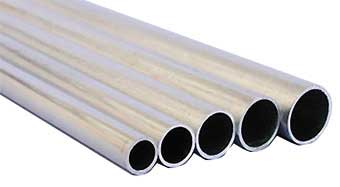Engineers typically have specified various piping materials for compressed air systems. However, recently, aluminum piping has become a popular option for many contractors, architects and engineering firms. There are many benefits of aluminum piping for compressed systems in many different applications, which we will discuss.
Aluminum Piping for Compressed Systems
Lowering Installation Costs
One of the many benefits of aluminum piping for compressed systems is that it lowers installation costs. More time is necessary to install a compressed air system when using steel pipe than for installation of a system using other materials. One factor behind this is that steel pipe requires threading to join pipes and install the proper fittings. Properly threading steel pipe requires special threading equipment and skilled workers to operate it. Not only do these workers cost more than unskilled workers, it also drives up installation costs. Also, threading pipes requires cutting fluids to get a good thread. This requires cleaning from the pipe before you can start using the system. Threading also creates a lot debris.
Modifying and maintaining a compressed air system consisting of steel pipe is more challenging than it is with systems using other materials. One reason for this is that steep pipe is much heavier than other materials. Steel pipe is also heavy. Therefore, it requires more labor to handle the piping while making modifications than it would to make modifications to a system made with other piping materials.
Minimizing System Leaks
Another problem with threaded connections is that they will inevitably leak. One of the many benefits of aluminum piping for compressed systems is that it minimizes system leaks.
It has been estimated that 8 to 10% of the compressed air in a system will leak through connections. This causes compressors to run harder and longer, which can drive up utility costs.
Aluminum Piping Doesn’t Corrode
A common issue with using steel pipe is that moisture inside the system will cause pipes to rust from the inside out. Even if the compressed air system has a moisture trap, there will be some moisture in the system and corrosion will occur. Even galvanized steel pipe will corrode, as not all pipes are galvanized both inside and out.
However, aluminum piping doesn’t corrode. Therefore, this makes it suitable for many applications that require clean air.
Aluminum Outperforms the Copper Alternative
Another solution for compressed air systems is copper. Copper is attractive because it doesn’t corrode as much as steel pipe. It can corrode. However, it doesn’t have pipe scaling like steel pipe. This means that a copper system will have fewer air flow problems and air cleanliness problems than steel pipe. However, it can still experience flow restriction over time.
A copper solution still comes with its own set of disadvantages, though. The price of copper increased by 20% in October of 2011, and subsequently, so did the price of copper pie. Prices have since dropped, but the fact remains that copper pipe continues to be considerably more expensive than steel pipe.
Lastly, not all types of copper piping are suitable for use with high air pressures. So, if you are planning to use copper, make sure you choose a pipe that can handle the pressure.
Cost and Durability
Another benefit of aluminum piping for compressed system is overall cost and durability. Steel pipe and copper pipe are the two most common materials for compressed air systems. However, you will also sometimes find systems that use PVC pipe and stainless steel pipe. In fact, it is against OSHA standards and highly dangerous to use PVC pipe for compressed air systems. Over time PVC becomes brittle and may explode when transporting air under high pressure.
As with other steel pipe systems, however, stainless steel systems can be costly to install. Threaded stainless steel pipe can be challenging to seal, often requiring the use of lubricants to thread correctly. Welding stainless steel drives up installation costs and safety concerns through the need of a skilled worker and the addition risk of the following:
- smoke inhalation
- damage to eye sight
- fire
These are just a few of the many benefits of using aluminum piping systems for compressed air systems. Contact Bryan Hose with the link below for more information!

